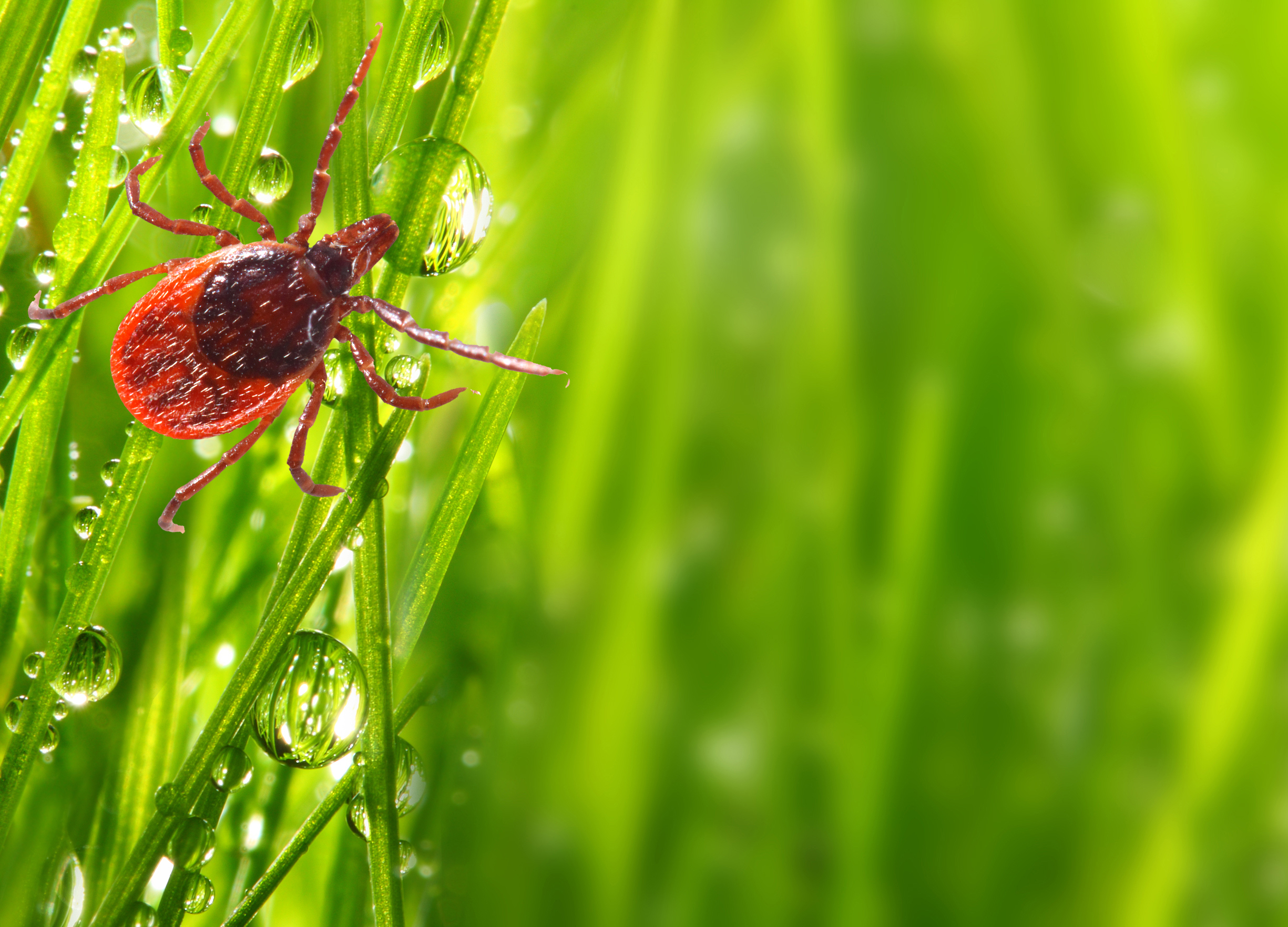Get Easy Health Digest™ in your inbox and don’t miss a thing when you subscribe today. Plus, get the free bonus report, Mother Nature’s Tips, Tricks and Remedies for Cholesterol, Blood Pressure & Blood Sugar as my way of saying welcome to the community!
The virus that’s made Lyme disease harder to diagnose

The bite of the deer tick causes Lyme disease, which strikes between 200,000 and 300,000 people each year, mostly in the northeast and northwest United States.
A person usually discovers they’ve got Lyme disease when they see the classic “bullseye” rash on their skin, but this rash is often concealed on the scalp or only appears in 60 to 80 percent of cases. This can delay the diagnosis of Lyme.
And now, because we’re so focused on avoiding the coronavirus, we’re much more likely to assume that the flu-like symptoms of early Lyme disease are caused by a case of COVID-19.
Lyme disease is obviously not as deadly as COVID-19 can be for some people. But left undiagnosed and untreated, it can cause severe, debilitating and long-term health issues that are almost impossible to get rid of.
Lyme disease is underdiagnosed
Lyme disease is often misdiagnosed as a case of “summer flu.” Now, of course, it will likely be misdiagnosed as a mild case of COVID-19. And without widespread COVID testing, that assumption will stick.
This means that a case of Lyme may very well go untreated in its early stages, the time antibiotics are most effective. Two to four weeks of antibiotics can usually get rid of Borrelia burgdorferi, the species of spirochete bacteria that causes Lyme.
Even before the coronavirus showed up, Lyme disease was underreported. The CDC estimates that state health departments report only one in 10 cases of the disease.
Now, with a dreaded disease that has similar symptoms (fatigue, fever, aches and chills), there’s every chance that Lyme disease will be even more underreported this season.
What happens when Lyme goes untreated?
If Lyme disease goes untreated, neurological and cognitive problems can develop. Meningitis and encephalitis are the biggest risks.
Meningitis is the inflammation of the membranes covering the brain and spinal cord. Lyme meningitis symptoms consist of headache, neck stiffness, nausea, vomiting, light sensitivity and fever.
Untreated meningitis can also cause inflammation of the heart muscle and heart failure.
Less common than meningitis, encephalitis is inflammation of the actual brain tissue, which can cause abnormal mood swings, personality or behavior changes, as well as changes in cognitive ability.
How to stay safe
As with COVID-19, mitigation (prevention) efforts are key. It’s easier to avoid getting Lyme than it is to treat it.
Know where to expect ticks. Many people get ticks right in their own backyard while gardening or walking the dog. Camping is also a high-risk activity.
Any area with tall grass and bushes is home to ticks. Avoid wooded and brushy areas with tall grass. If you’re in the woods, walk in the center of the trail.
Treat clothing, camping gear and skin with safe and effective insect repellents.
Many fragrances that smell wonderful to humans are highly repellent to ticks. Lavender, peppermint, citronella, lemongrass, cedar, rose geranium and citrus have all been shown to keep ticks away. So, buy soaps and shampoos that are naturally fragranced with these ingredients.
Tend your yard. Ticks are attracted to areas with tall grass, moisture and shade, so keep your grass cut short, your shrubs trimmed and your leaves raked up.
When you come inside…
Check your clothing for ticks. Any ticks that are found should be removed. Tumble dry clothes in a dryer on high heat for 10 minutes to kill ticks on dry clothing. If the clothes are damp, additional time may be needed. If the clothes require washing first, hot water is recommended. Cold and medium temperature water will not kill ticks.
Examine gear and pets. Ticks rarely travel very far under their own steam. They hitch a ride into your home on clothing and pets, then attach to a person later, so carefully examine pets, coats and daypacks.
Shower soon after being outdoors. Showering within two hours of coming indoors has been shown to reduce your risk of getting Lyme disease. Showering may help wash off unattached ticks. Doing a tick check in the shower is convenient, too.
Do a full-body check when you return from potentially tick-infested areas, including your own backyard. Use a hand-held or full-length mirror to view all parts of your body. Check these parts of your body for ticks:
- Under the arms
- In and around the ears
- Inside belly button
- Back of the knees
- In and around the hair
- Between the legs
- Around the waist
Lastly, if you experience any of the symptoms of Lyme disease, don’t brush it off. Get tested by your doctor. It’s well worth the time it will take if it helps you get treatment early enough to prevent a full-blown case of the disease.
Sources:
- Lyme disease symptoms could be mistaken for COVID-19, with serious consequences — The Conversation
- How to Repel Ticks Naturally — The Spruce













